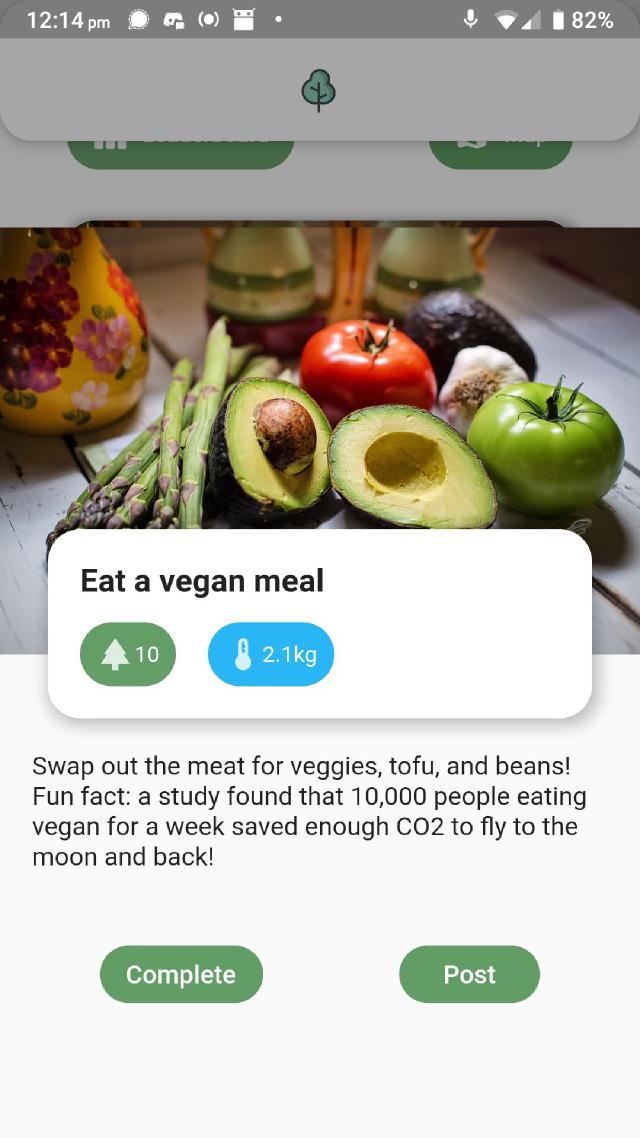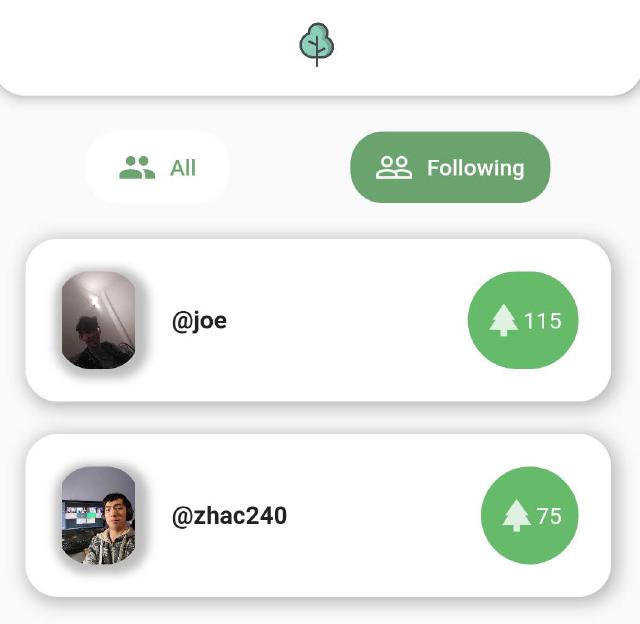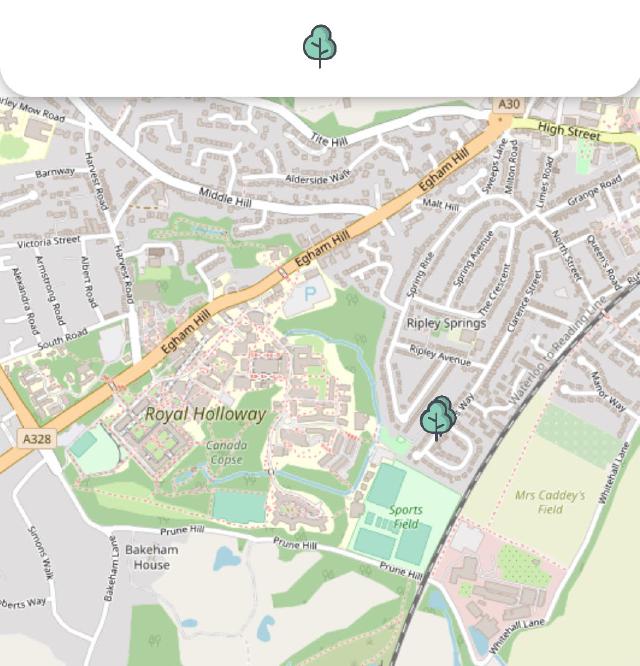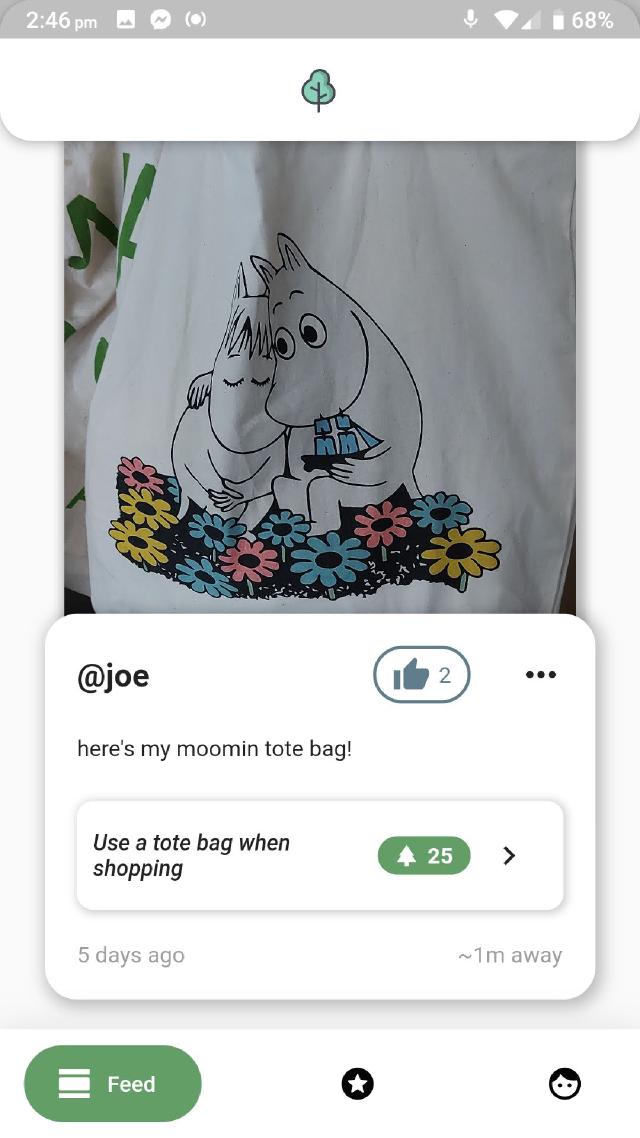ecothon!
- This post is more than 6 months old. Circumstances or my opinions may have changed.demo#
Last weekend I took part in a hackathon with 3 of my housemates. We decided to make a social network app that inspires people to live a more eco-concious lifestyle. It has a concept of achievements, which are simple changes or tasks that people can make to reduce their environmental impact.

You can either privately complete an achievement, or publicly create a post linked to that specific achievement. Either of these will add to your “carbon score”, which is displayed on a leaderboard against people you are following.

You can also like and comment on posts, or view a map of where posts were made from. As you can see we don’t get out of the house much…

The app opens to a feed, showing all the posts that have been made in your area. These are normally associated with an image, but it is possible to make a post without one.

how it works#
The app itself was made using Flutter, a cross platform UI toolkit – theoretically it should work on mobile, desktop and web. However we only tested it on Android, and I’m not sure quite how theoretical Flutter’s support for the others is.
We made the backend in Go, using go-fiber as a framework. None of us had properly used Go before and it was a good introduction to it. I really like it so far, other than having to get used to things that would take one line on Python take up 2 or more, to handle functions returning error alongside their results. There is the obvious upside to this that you actually have to think about handling these errors, encouraging correct code. It also means Go is unencumbered by exceptions being thrown all over the place, part of why it is so fast.
The backend is hosted on Digital Ocean, as I happened to have $100 of free credit. I set up Github actions to automatically build a docker image and push it to Digital Ocean’s container registry. The workflow then logs into their Kubernetes platform, deploying the new version by updating the config so that the latest push to master is deployed.
We run two nodes in the cluster, with traffic split between them using a load balancer (which is completely unnecessary for the level of traffic). User images are uploaded to their equivalent of S3, and the data is all stored in a MongoDB instance hosted by Atlas. As I’d never used it before, setting up Kubernetes was a fairly large learning curve, but tutorials like this one really helped get us up and running fairly quickly.
github repository#
You can see the repository here, or even try it out if you are feeling brave – you can download an APK from the Github releases.
Page last updated by 16e99c4 - 2025-02-16:
fix: stop lazy loading images above the fold:
Comments:
Send me a comment by emailing comments@george.honeywood.org.uk, with the subject line "ecothon".